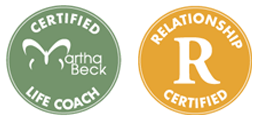Here’s one definition by David Hawkins, PhD:

Photo by Victor Dueñas Teixeira on Unsplash
Letting go involves being aware of a feeling, letting it come up, staying with it and letting it run it’s course without wanting to make it different or do anything about it. It means simply to let the feeling be there and to focus on letting out the energy behind it.
I see letting go in several contexts. They are all ultimately related, of course.
Today I’m going to discuss letting go of the past and next time I’m going to write about letting go of control.
Most of us struggle with letting go of some part of our past.
It could be a bad memory.
It could be a trauma response in our body from the past.
It could be a pattern of behavior we learned long ago.
From the time we are very young, we begin to form beliefs about ourselves, others and the world. Most of these come from external inputs from our parents, caretakers, teachers, peers and events we experience. When any of these inputs are coupled with trauma, it leaves an even stronger impression. These impressions are in the form of thoughts (or beliefs) and feelings.
For example, when a child is exposed to abuse, violence, war, neglect, a parent’s addiction, illness, etc., the child experiences strong feelings such as fear. The child will then form thoughts and beliefs from these experiences such as (this is only one of many possibilities):
when my mom is drinking, raging, beating my brother, etc., I must remain very quiet and invisible so I will be safe (or she won’t be mad at me). I’ll be a good girl.
This child may grow up to be hyper focused on other’s feelings to learn how to stay safe and in the process learn how to neglect her own feelings. She may learn to focus more on achievement and less on her own needs.
Let’s suppose that at some point as an adult, she realizes that these beliefs are causing her suffering. For example, maybe in her marriage she over-functions often and then gets angry at her partner for not taking care of her more. She realizes that she is constantly fueled by guilt to do more for others and less for herself. She realizes that this is a pattern that came from her childhood and her relationship with her mother.
How does she “let go” of her past to break this pattern?
I approach letting go of the past as a 4-step process.
The first step is to become aware that what is happening int he present is triggering old thoughts/beliefs and feelings (see elevator).
The skill necessary to do this is to access our Observing Self. Our OS is the part of our awareness that can notice or witness our thoughts and feelings. You can practice this skill to make it stronger by noticing thoughts throughout the day….
I just noticed that I had a really angry thought
The more you practice observing your thoughts and feelings, the easier it will be to catch yourself and notice when you are experiencing thoughts and feelings from the past.
Once you are aware that you are being hijacked by old triggers, the second step is to make a decision in that moment that you will NOT REACT from this state of mind.
This step is simple, but not always easy. It can be challenging because the brain likes predictability and patterns. You have a pattern of responding to the trigger in a certain way.
In our example, Fran experiences a triggering anxiety when she senses her partner, family member or friend is unhappy. Her patterned response is to immediately get involved and become very attuned to the other person’s needs and disconnect from her own needs. In following the first two steps for letting go of the past, Fran would shift into her Observing Self and notice her thoughts and feelings. Then she would make a decision:
I am not going to rush in and try to fix
Instead, Fran needs to practice step number three.
The third step is to become mindful of the present moment. This is a crucial step to let go of the past . Fran needs to center herself in this moment. Our five senses are a great way to ground into the present. Focus your eyes on something right there or notice how your body feels as it touches your chair or clothing. Focusing on these sensations or sight brings you into the moment. You can’t let go of the past if you are experiencing thoughts and feelings from the past. Getting focused in the present allows you to separate from old thoughts and feelings from the past and therefore gives you that space to let it go.
The fourth step is to actually let it go.
It can be helpful to use a visual cue. Her are 3 options I’ve used with success:
- Visualize your reaction moving through something like a door or screen or window. See the screen, for example, as having big spaces and that the energy of your pain/fear/anger/worry can move right through those holes and OUT.
- Visualize your reaction as water and see it going down the drain as you let go. Just washed away.
- Visualize your reaction as energy moving down through your body and out through the bottoms of your feet and into the earth as you exhale and say “letting go”.
This has to become an intentional practice and be repeated over and over. Don’t try it once and then decide that it didn’t work. Patterns that are created by strong emotions or experiences don’t just disappear instantly. Think about how long you have had this pattern of reaction. Letting go is a process. You have to repeat the letting go over and over until it becomes neutral. You have to clear out all of the old energy that has been stored there.
If you’d like some additional support with letting go of the past, contact me to set up a coaching consultation.

